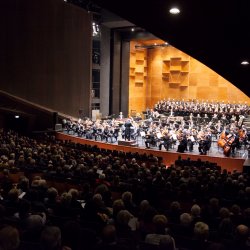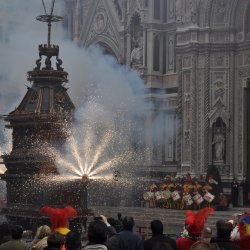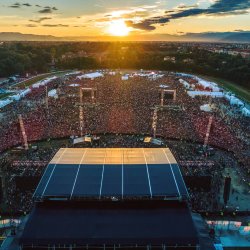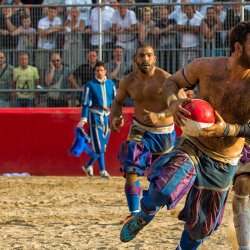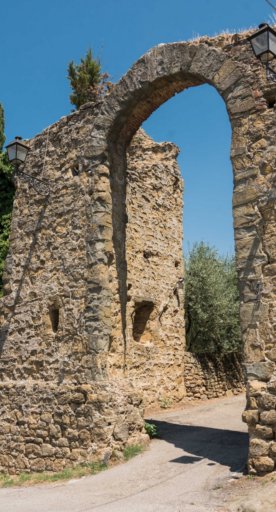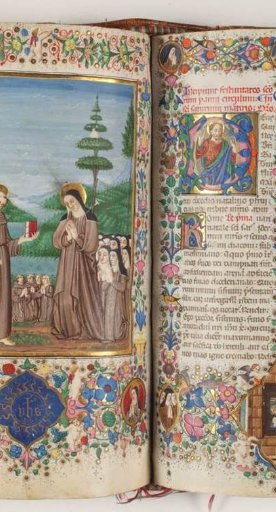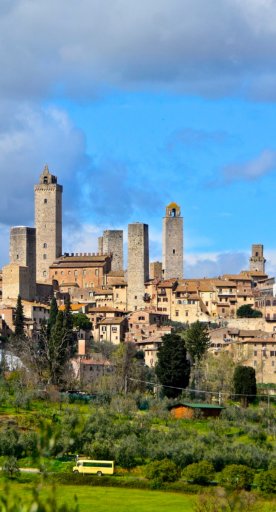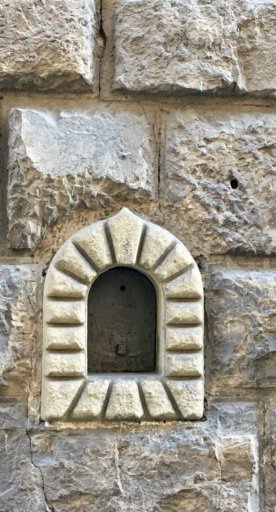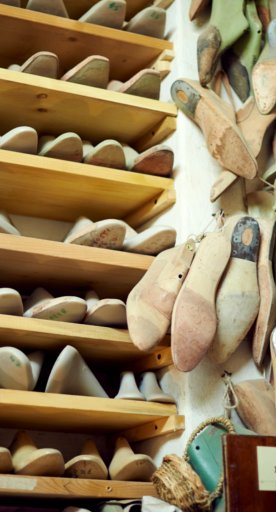The best museums for kids in Tuscany
A short guide to the most interesting museums to visit with children and teens for a family-friendly travel experience
Learning about the past, discovering the mysteries of the universe, observing animals and learning to understand what lies behind a painting or a work of art - this is the challenge of many museum facilities to bring children and families closer to culture and expose them to beauty early on.
In recent years, in fact, the spirit, techniques and approach of museum exhibits have changed radically.
Art exhibits and museums are by now interactive, stimulating and funny places where it is possible to bring together culture with play and let children participate firsthand in various activities.
-
1.Florence, Prato and Empolese Valdelsa
-
2.Siena
-
3.Pisa
-
4.Maremma
-
5.Livorno and the Etruscan Coast
Florence, Prato and Empolese Valdelsa
The Galleria degli Uffizi (Uffizi Gallery) proposes a course entirely dedicated to families: UffiziKids was created precisely with the intention of introducing young people to cultural heritage so that it becomes an integral part of their individuality, as people and as citizens.
With UffiziKids, families will find in the museums of the Galleria degli Uffizi a dedicated staff who will help them and direct during their visit, providing information on the paths in autonomy, about the initiatives promoted for families and the museum in general.
For an optimal experience, accompanying children are advised to take advantage of the Passepartout Family card, valid for two adults, along with an unlimited number of kids.
The Museo Galileo (Galileo Museum) holds the only instruments designed and built by Galileo that have come down to us. Very precious are the two binoculars and the telescope objective lens with which the scientist discovered the satellites of Jupiter.
One of the world's most important collections of scientific instruments and experimental apparatuses is also preserved here.
The exhibition features more than a thousand instruments, of great scientific importance and exceptional beauty, and revolves around the extraordinary figure of Galileo, reconstructing the events in Florence and Tuscany.
The different rooms are also devoted to astronomy and the measurement of time, the representation of the world in antiquity, precision instruments, and chemistry.
Very fascinating is also the monumental sundial built in 2007, created as an “mathematical ornament” of the Museo Galileo, which is located right at the entrance of Piazza dei Giudici.
The sundial is an instrument of ancient origin for measuring time, and its operation is based on the observation of the produced shadow: it will be funny being able to figure out the exact time and date along with the kids.

The Museum of the Palazzo Vecchio offers numerous possibilities for families with children: activities are all by reservation and revolve around the lives of the Medici and the wonderful spaces that have welcomed them over the centuries.
The guided tour “Life at Court” is designed specifically for children ages 4 to 7-8.
Walking through the halls of the museum, it will be possible to admire the splendor of what, in the 16th century, was the residence of the Duke Cosimo I de’ Medici, his wife Eleonora de Toledo and of their eleven children, and imagine the sumptuous banquets in the Great Hall, the flower terraces like gardens, and immerse yourself in the daily life of the little princes.
Another family trail is also dedicated to Cosimo de' Medici: the "Turtle with a Sail."
Duke Cosimo had a particular fondness for the turtle with a sail, omnipresent, in fact, in the halls of his palace.
It is precisely a small turtle that will tell children an ancient story about speed and slowness, prudence and wisdom. At the end of the story, it will be fun to try your hand at hunting the turtle with the sail in the rooms of the Palazzo Vecchio.
The Stibbert Museum is undoubtedly one of the most original and mysterious places in Florence: children will be amazed at this house-museum built in the 19th century by its owner, Frederick Stibbert, in which exceptional collections of weapons and armors from European, Islamic, and Japanese civilizations are gathered and arranged in a scenic setting.
Splendid is the Sala della Cavalcata, where life-size European and Ottoman knights are arrayed, as well as katanas and armors from Japan that really belonged to the last samurai.
In addition to the museum, also of great charm is the park of the villa: here, too, Stibbert used the same eclectic taste, the same curiosity for the past and the exotic, creating an almost enchanted place with groves, pavilions, statues, fake ruins, and a small Egyptian temple. A museum perfectly suited for children, boys and girls who will even be able to wear a helmet and a chainmail to understand the weight the knights had to bear.
Guided tours for families are held every Sunday morning by reservation.
The Museo Leonardiano in Vinci is one of the most extensive and original collections of machines and models of Leonardo the inventor, technologist and engineer.
The museum tour winds its way through the Conti Guidi Castle and the Palazzina Uzielli in Vinci: various models of Leonardo's machines are on display in the exhibition, presented with precise references to the artist's sketches.
The guided family tour starts in the Palazzina Uzielli with rooms dedicated to construction machinery, textile technology and mechanical watches and continues, on the first floor, with the section dedicated to Leonardo’s studies on the human body ad to the section reserved for machine elements. The models on display are accompanied by a history in pictures taken from period paintings and manuscripts and from animated digital reconstructions which help to better understand their functioning. The visit then continues inside the Conti Guidi Castle where, on the ground floor, there are sections devoted to civil engineering and war machines.
The model of the large articulated wing frames the Gallery where the flight section and that of the meachanism and instrument.
In addition, every second Sunday of the month, families and kids can delve into the great Leonardo's many interests through games and workshops. Each appointment includes a different activity.
The Museo di Scienze Planetarie (Planetary Science Museum) in Prato is an itinerary designed to introduce the spectacular nature of the Universe in a simple and engaging way.
Astrophysics, astronomy, geology, as well as the study of minerals and planets, become subjects truly for everyone, thanks to an itinerary that takes into account the most diverse needs.
The museum offers the opportunity, through meteorites - including the large Nantan meteorite to touch - impact rocks and minerals on display, to take a journey to the discovery of the formation and evolution of our Solar System and of planet Earth.
Moreover, a new guided tour leads adults and children to discover unusual and curious stories about some of the exhibits.
With materials provided by the museum, it will be possible to follow video stories and answer captivating quizzes to find the mysterious word that permits to conquer the seal of the Museum!
Siena

The Museo d’arte per bambini (Museum of art for children) is located inside the museum complex of Santa Maria della Scala, the ancient hospital for worshippers along the Via Francigena, and it proposes a path designed precisely to bring the youngest children closer to the world of art.
The museum complex houses multiple identities and museum routes inside it, from ancient to contemporary: precisely for this reason, the educational and didactic offerings range from archaeological and historical themes to contemporary art.
Compared to other museums specifically aimed at children, the philosophy of this facility is different: the teaching method is emphasized over creative play through a series of thematic paths, meetings and exhibitions in which children are accompanied to the understanding of the language of art that is explored in all its aspects.
The Museo di Storia Naturale dell'Accademia dei Fisiocritici (Museum of Natural History of the Academy of the Physiocritics) is housed in the former monastery of the Camaldolese dating back to the 12th century and in some of the most ancient and important scientific museums in Tuscany. The exhibit hosts natural and historical relics, vintage instruments and curiosities: in the inner courtyard of the ancient monastery, you can admire the skeleton of a fin whale 15 meters long, which has become the symbol of the museum.
The section dedicated to zoology hosts a wealth of specimens of naturalized vertebrates (stuffed and mounted in natural positions), skeletons, specimens in alcohol, mollusk shells, and insect boxes, while the geological section collects many minerals, rocks, and fossils.
The museum also houses an archaeological section that includes some Etruscan cinerary urns.
Pisa

The Museo delle Navi Antiche di Pisa (Museum of the Ancient Ships in Pisa) is one of the most fascinating and original museums: it houses seven Roman-era vessels dating from the 3rd century B.C. to the 7th century A.D. and about 8,000 artifacts. Family activities are designed to provide young children with an experiential path: proposals are structured as hands-on activities in the museum and include general or themed tours and workshops led by experienced archaeological operators.
It will be interesting for children to discover all the mysteries of ships, the most important trade routes, cargoes and daily life on board.
From July to September on Saturday and Sunday afternoons it will be possible to participate in workshops for each age group: ranging from the toys of the ancient Romans, to pathways for learning to recognize objects and fragments alongside the archeologists, to the discovery of cults and onboard superstitions to make amulets and objects related to sea rituals. By reservation only.
The Museo di Storia Naturale (Museum of Natural History) is one the most ancient ones in the world. Created as a “Gallery” around the end of the 16th century at the behest of Ferdinando I de’ Medici, it now collects and exhibits more than 400 years of the history of scientific-naturalistic research at the University of Pisa.
Of considerable importance is the Cetacean Gallery – among the first in Europe for scientific value – the sector of the Paleontology with dinosaurs and the Aquarium Gallery, to date the largest freshwater aquarium in Italy. Family activities are aimed at school-age children and also include actual camps during school closures. Each activity covers some special feature of the museum, such as workshops exploring the underground, carnivores and herbivores, and those on underwater creatures.
Maremma
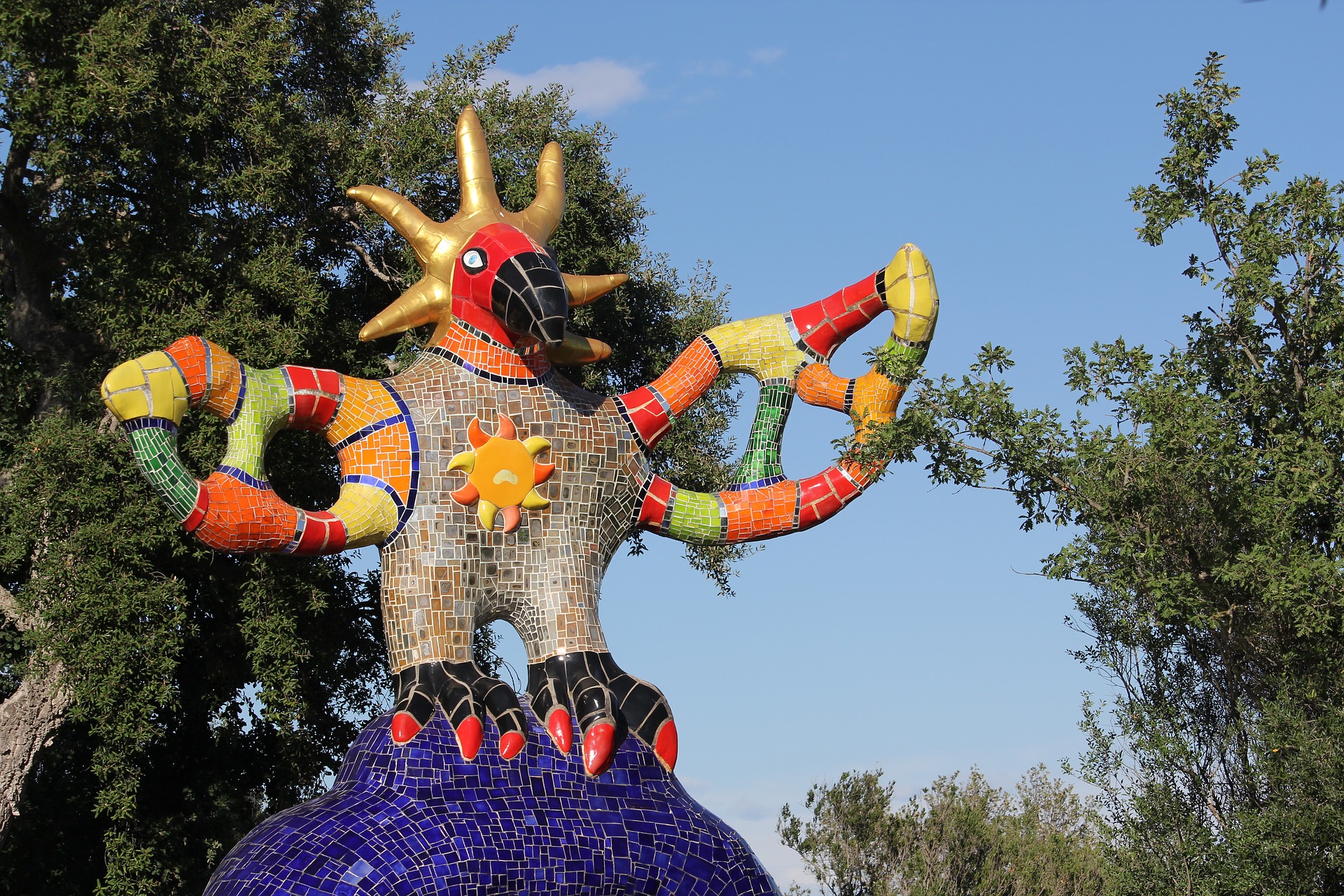
The Giardino dei Tarocchi (Garden of the Tarots) is located in the heart of the Maremma, between the hills of Capalbio and the sea: born out of the fantasy of the French sculptor Niki de Saint Phalle, the Garden houses its statues inspired by the figures of the major arcana of the deck of the tarots, which bring to life an esoteric path inspired by the beautiful Parc Güell by Gaudì in Barcelona.
The intense and vivid colors with which the huge sculptures are made will leave children and adults alike speechless; in addition, it is possible to enter many of the sculptures featured.
Guided tours are provided for families - reservation required - in which adults and children will be involved in a fun game and about the history of the park, the meaning of the works and many interesting facts about the statues.
Livorno and the Etruscan Coast
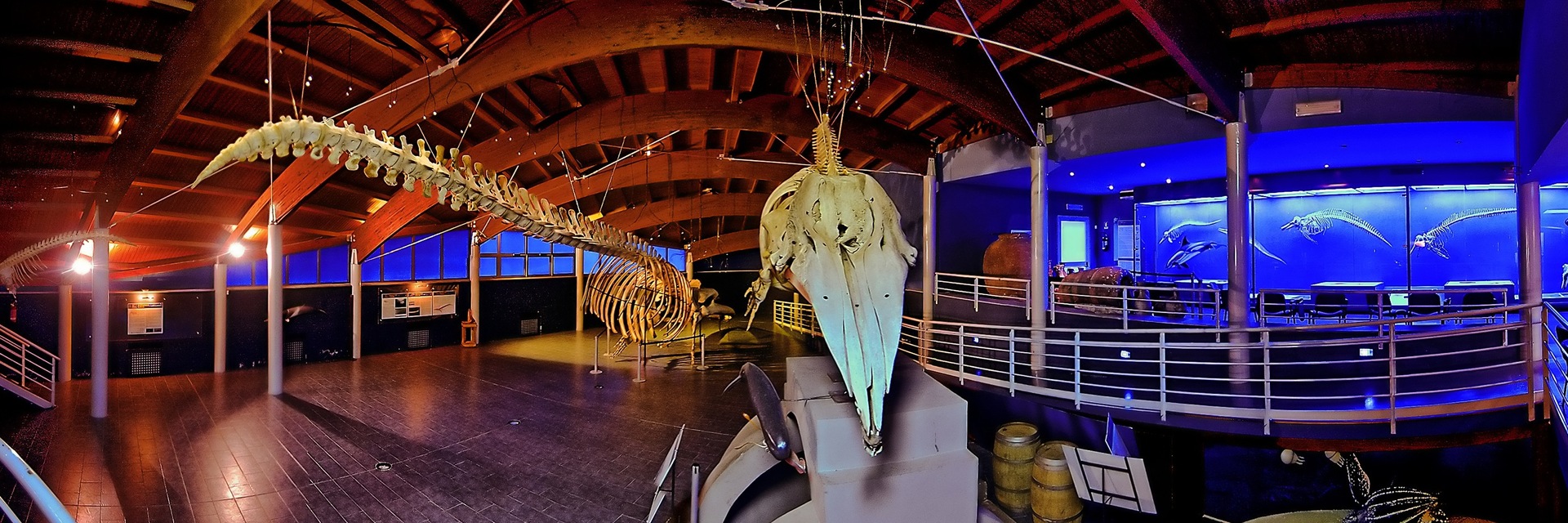
The Parco Archeominerario di San Silvestro (Archeomineral Park of San Silvestro) - 450 hectares behind Campiglia Marittima and the promontory of Piombino - includes museums, mining galleries, and a medieval village of miners and smelters dating back a thousand years.
The visit starts at the Museo dell’Archeologia e dei Minerali (Museum of Archeology and Minerals) and continues in the galleries of the Miniera del Temperino (Temperino Mine) discovering the underground world and the evolution of exploration and mining techniques for copper, lead, silver and zinc ores in the Val di Cornia.
Leaving the mine, it takes a few minutes to reach the Pozzo Earle, where the setting-ups of the Museo delle Macchine Minerarie (Mining Machinery Museum) and of the Museo dei Minatori (Miners’ Museum) (Morteo) tell the story of the last decades of mining history.
From here we set off on a journey aboard the characteristic mine train, which traces the journey of minerals from the mining sites to the processing plants.
A continuous discovery for children who will love the little train and be fascinated by the mines and the stories of the miners.
The Museo di Storia Naturale del Mediterraneo, (Museum of Natural History of the Mediterranean) housed inside the historic Villa Henderson, is a research center active in the preservation and conservation of natural heritage, but also a center of scientific culture and educational activities for schools.
Structured in several rooms, it traces the history of man and human evolution, both anatomically and culturally.
The Sala del Mare (Sea Hall) is dedicated to biology and the evolution of cetaceans with displays of skeletons and Mediterranean seabeds reproduced through dioramas, while the Sala degli invertebrati (Hall of the invertrebrates) displays specimens of terrestrial and marine invertebrates.
It will be very interesting to see the Neanderthal Man - reproduced by applying forensic techniques to a Neanderthal skull - and admire the cave paintings in a copy of the famous cave of Lascaux or the statuettes of the prehistoric Venuses.
Multifunctional spaces equipped with science labs, fully equipped classrooms and large green spaces for play and educational activities are provided for families. By reservation.





